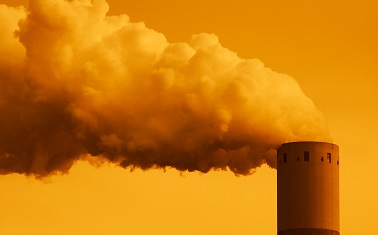Defenders of dirty power plants use doublespeak to shape debate

- Under the proposed Clean Power Plan, plants must cut carbon dioxide emissions by 30 percent below 2005 levels by 2030.
(This blog originally appeared on EDF Voices)
As we’ve noted before, few opponents of the federal Clean Power Plan want to stand up and say they favor unlimited carbon pollution. So they’re apt to frame their arguments in more clever ways.
Sometimes their approach is to use misleading statistics – like when they talk about the cost of moving to clean energy without mentioning the much larger benefits of doing so.
Or they’ll use an appealing bit of logic, which sounds right until it’s exposed to the way the world really works.
It takes more than one EPA rule
One of those seemingly-logical attacks is the complaint that the plan the U.S. Environmental Protection Agency rolled out June 2 won’t solve climate change.
A CATO Institute blog says, “EPA’s Regulations Will Not Mitigate Climate Change.” At first glance, that seems like a step forward from the crazier objections – for instance, that climate change doesn’t exist.
But it’s really just a new strategy aimed at the same goal, like a lawyer who failed to impress the jury with an insanity defense and is now piecing together a fake alibi.
Your suspicions should be raised immediately when coal conglomerates complain that an EPA rule does “little” to solve an environmental problem, which on the surface sounds like a worthy objection. Why should the United States take this step to end unlimited pollution from power plants, they ask, when it won’t resolve the problem we are facing?
The complaint rests on the idea that the pollution reductions from U.S. power plants will not cut enough emissions to stop global warming. And that’s true.
It’s like telling Ike to call off D-Day because the landing alone wouldn’t defeat the Germans.
Even though power plant emissions are the largest source of carbon pollution in the United States – as of 2011, our utilities put out more of this pollution than the entire economies of every foreign country but China – they’re only a portion of total global output. So this plan does not, on its own, solve climate change.
But this argument is sort of like telling Ike to call off D-Day because the landing alone wouldn’t defeat the Germans.
Or it’s like telling a person with multiple risk factors for heart disease to keep smoking, because quitting won’t prevent an attack on its own. The reality is that in solving big problems, a major first step is always necessary and it’s always insufficient.
The most important truth – in fact, the very reason some in industry are scrambling for arguments to oppose this new rule – is that the Clean Power Plan is a turning point in our environmental and economic history.
A historic step
For the first time, we’ll cut carbon emissions from their largest source, and begin to drive greater investment in abundant, affordable clean energy.
It will also have a big impact around the world. Addressing a major global problem in the 21st Century requires America to lead by example.
By making a substantial cut in our largest source of carbon emissions, we will not only cut billions of tons of pollution, we will enable a much bigger step forward internationally.
Let’s face it: Most of those in the fossil fuel industry who argue that the Clean Power Plan doesn’t cut enough pollution are really just trying to make sure we don’t cut any pollution at all.
They know that if they’re able to intimidate the Congress into blocking these rules, it would make it substantially less likely that the U.S. and the rest of the world will move forward to a cleaner future.
But there’s an easy test to tell if someone offering this complaint is sincere: If they’re making suggestions to further strengthen the final rule, then they’re actually interested in a solution.
If not, they’re just trying to keep America living in the past.












